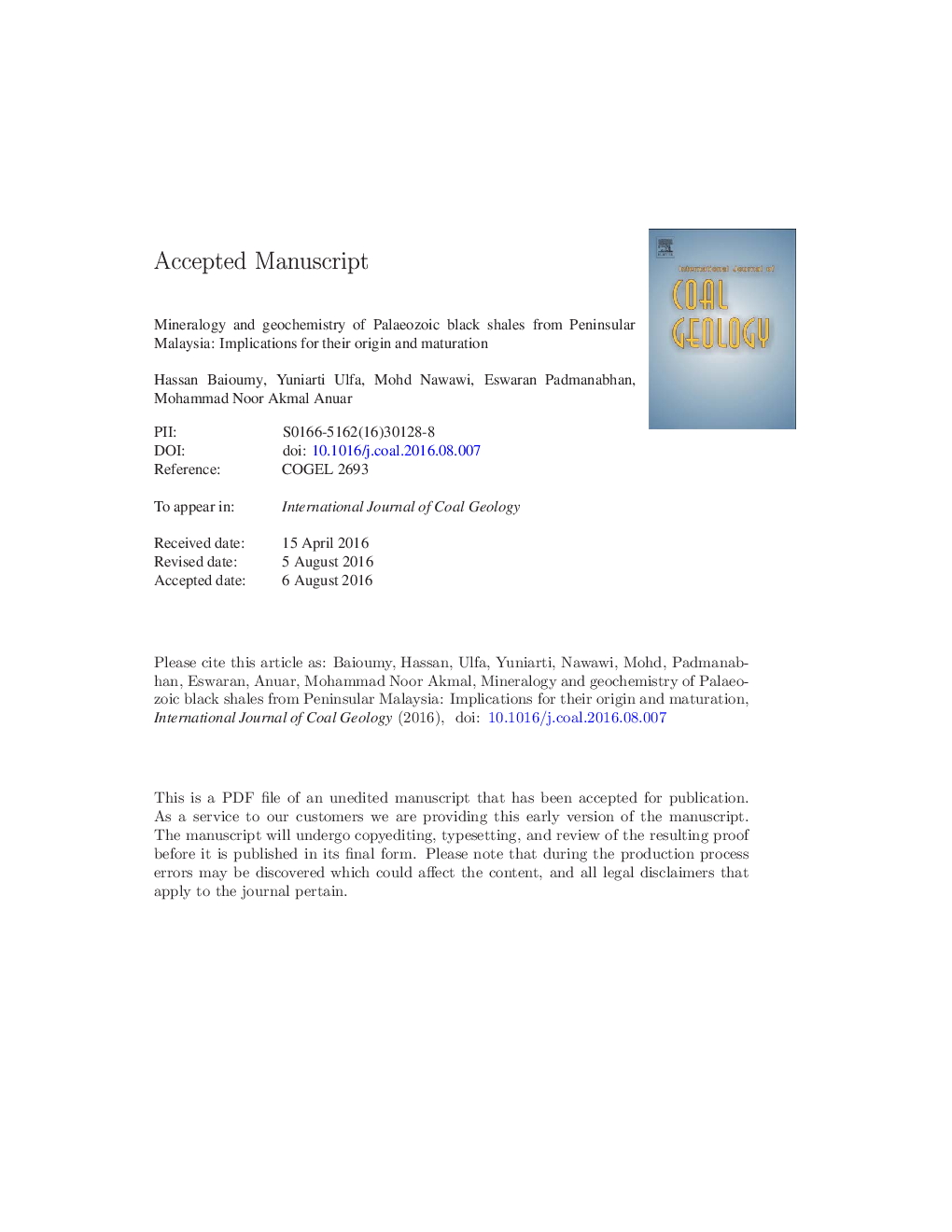| Article ID | Journal | Published Year | Pages | File Type |
|---|---|---|---|---|
| 8123692 | International Journal of Coal Geology | 2016 | 55 Pages |
Abstract
This paper reports nineteen Palaeozoic formations in Malaysia that contain black shales that are classified into seven categories based on their age. These are the Cambrian-Ordovician, Ordovician-Devonian, Silurian-Devonian, Devonian, Carboniferous, Carboniferous-Permian and Permian black shales. Although illite was identified in all black shales, other clay minerals including kaolinite and smectite-illite mixed layers show significant variations among the studied samples. The Al2O3/TiO2 ratios (13-33), SiO2 contents of probable magmatic source rocks (54-69 wt.%) and Zr-TiO2 bivariate diagram suggest a mixture of felsic and intermediate source rocks for the studied black shales. This indicates that the hidden basement rocks in Malaysia are dominated by felsic igneous rocks. Variations in clay minerals, SiO2 and Al2O3/TiO2 ratios and upper continental crust (UCC)-normalized REE patterns suggest a local provenance for each locality rather than regional and common source rocks for all black shales. Al2O3/SiO2 ratios vary from one age to the other ranging between 0.09 and 0.37. This indicates changes in the degree of weathering of the sediment-source rocks of these shales and suggests climate changes in the Peninsular Malaysia during the Palaeozoic from relatively wet conditions during the Cambrian to relatively dry conditions during the Ordovician followed by relatively wet conditions extends from the Silurian to the Carboniferous, which followed by relatively dry conditions during the formation of Carboniferous-Permian black shales and finally to relatively wet conditions during the Permian. The V/Ni, V/(V + Ni) and V/(V + Cr) ratios as well as the positive Ce anomalies indicate that these black shales were deposited under reducing conditions. The high V/Ni ratios (> 3) also suggest a purely marine source input for the organic matter. Devonian black shales show relatively high concentrations of redox-sensitive elements, which may suggest the possible existence of Devonian anoxia as well as the Devonian-Carboniferous (D-C) boundary in Malaysia. Based on the abundance of illite (> 85%) and illite crystallinity (IC) values (27-46°Î2θ), the majority of the Palaeozoic black shales in Peninsular Malaysia are probably anchimetamorphic and over-matured.
Related Topics
Physical Sciences and Engineering
Earth and Planetary Sciences
Economic Geology
Authors
Hassan Baioumy, Yuniarti Ulfa, Mohd Nawawi, Eswaran Padmanabhan, Mohammad Noor Akmal Anuar,
